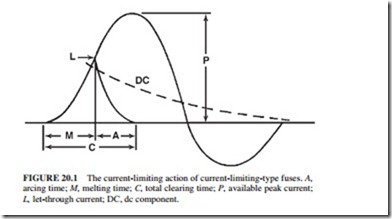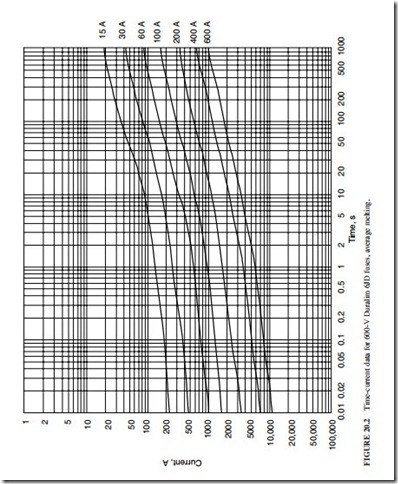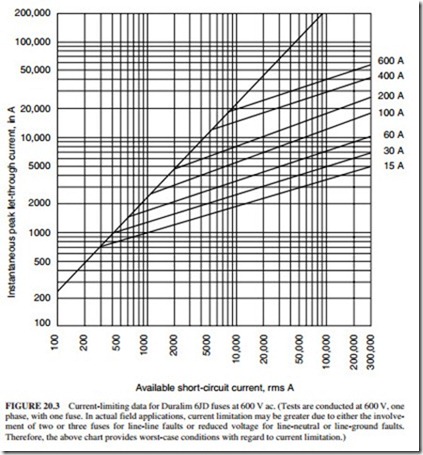TYPES OF FUSES
The most common types of fuses are single-element, dual-element, and current-limiting.
Single-Element Fuses
Single-element fuses have a high-speed response to overcurrents. They are usually used for the protection of nonmotor loads. Motor inrush currents are usually 6 times the normal full-load current.
Single-element fuses could cause nuisance opening during the starting period. Therefore, they are not normally suitable for motor controllers.
Note: The single-element fuses could cause nuisance openings if used in other inductive load applications such as transformers or solenoids.
Dual-Element Fuses
The dual-element fuse has two distinct series-connected sections. The first provides instantaneous operation for short circuits, and the second provides time-delayed operation for normal overloads. These fuses are ideally suited for motor controllers. The manufacturers of these fuses recommend their use for short-circuit and running overload protection.
However, this is not a common practice in industry. The dual-element fuses are not highly desirable for running overload protection because of the lengthy downtime required to obtain and install a new fuse. Most controllers are equipped with overload relays. These relays are manually or automatically resettable after an overload that caused the devices to open the circuit.
Current-Limiting Fuses
Current-limiting fuses are designed to open the circuit in less than 1 4 cycle (based on 60 Hz). Figure 20.1 illustrates the performance of a current-limiting fuse. The current-limiting fuse will react as any other fuse to low and medium magnitudes of fault current (Fig. 20.2). The current-limiting action will occur at high magnitudes of fault current (Fig. 20.3).
A current-limiting fuse will not produce external arcing. The special quartz sand inside the fuse container is transformed to glass by the energy from the fault current. The glass creates an insulating material that results in circuit opening.
The circuit-limiting fuse has the highest capability to interrupt short circuits of any fuse available. The current-limiting fuse operates to drive the fault current of a voltage surge to zero. These fuses keep a voltage surge to a minimum to prevent equipment damage.
Figure 20.4 illustrates the differences in time-current characteristics of two different types of current-limiting fuses. The two fuses shown are both E-rated fuses at the 5.0-kV level. The fuse on the right is a “slower” fuse. This feature makes it more suitable for trans- former primary protection than the “fast” fuse on the left.
EXAMPLE 20.1 Consider a 500-kVA transformer connected delta-wye on a 4800-V sys- tem. The full-load current is a 60 A. The magnetizing inrush current is 10 to 12 times the full-load current. It lasts 0.1 s. At a current of 12 times full load, or 720 A, the “fast” fuse on the left in Fig. 20.4 may have blown on magnetizing inrush current. The fuse on the right had plenty of time to withstand the inrush current.


